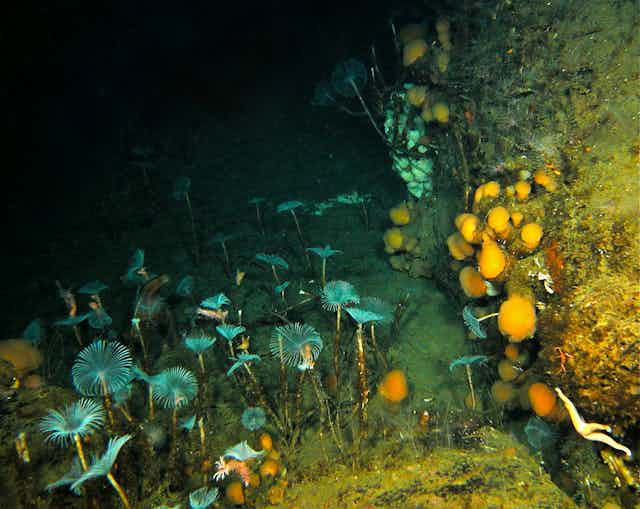It is no secret that climate change is transforming the polar regions. Retreating glaciers, melting ice-caps and changing sea ice patterns are frequently reported in both the Arctic and Antarctic, and with these come dramatic changes to polar ecosystems.
But new research published this week in Global Change Biology reveals that polar ecosystems may be even more sensitive to climate change than previously thought. This is the result of a peculiar interaction between two environmental variables that only occurs at high latitudes.
Change in light with early ice-loss
Polar ecosystems are typically covered by snow and ice during winter, so receive almost all their annual light during summer when they’re ice-free. Warming temperatures and changing wind patterns mean that in many polar regions the summer ice-free period is expanding, with the ice melt occurring earlier in summer, and freeze occurring later.
This increases the amount of light reaching polar ecosystems per year, but it’s not a gradual increase. The tilt of the Earth means that summer days get far more light than winter, and in many places early ice melt will bring the ice-free period closer to the summer solstice (when the amount of sunlight reaches maximum). So as the ice melts earlier, the amount of sunlight reaching some ecosystems per year will increase exponentially.
Ecological tipping points
Events where small changes in environmental conditions — such as early ice melt — cause rapid and extensive ecological change are known as “tipping points”. Small changes in the timing of sea ice melt will produce large changes in annual light, which in turn will have major consequences for polar ecosystems.
Light is important because it controls a fundamental aspect of ecosystems: what type of organisms are the most abundant. From this perspective there are two main types of organisms: those, such as plants, that make their own food from sunlight (phototrophs), and those, mostly animals, that do not need sunlight and have to eat other organisms (heterotrophs).
Because some polar ecosystems receive only small amounts of sunlight, they are dominated by animals, as they generally do not need light to survive. But this could easily change if light increases due to melting ice. Many polar ecosystems could shift to having fewer animals and become dominated by plants and algae.
Vulnerable marine life
Our study looks at this effect on the Antarctic sea floor. We found that even a slight shift in the date of the annual sea ice melt can cause a tipping point where unique, invertebrate communities used to living in the dark are replaced by algae.
Near-shore areas of sea floor in both polar regions are vulnerable to this process, which could profoundly reduce coastal biodiversity. We predict that in areas where sea ice departs earlier in summer, biodiversity on the seabed could be reduced by as much as one-third within decades.
Invertebrates in the communities at risk include sponges, bryozoans, sea squirts and worms. These animals perform important functions such as filtering of water and recycling of nutrients, and are also food for fish and other creatures.
Where and when?
Sea ice is not changing uniformly across space. It is actually growing in some parts of Antarctica.
In other areas, it is diminishing fast. The West Antarctic Peninsula has seen a lengthening of the ice-free period by five days per year for the past 30 years, and sea ice extent in the Arctic is in sharp decline.
Our modelling shows that recent changes in ice and snow cover at the poles have already transformed the amount of light reaching large areas of the Arctic and Antarctic annually. The areas most vulnerable to future change in light are the ones that lose their ice in the months immediately following the summer solstice.
Effects on other ecosystems
This light-driven tipping point can be applied to lots of other ecosystems that are seasonally covered by snow or ice. These include high latitude land, lake, and shallow marine ecosystems. It’s likely that an expansion of Arctic vegetation and marine algae is driven by this process.
Changes won’t stop at plants - anything that eats or uses plants for habitat may also be affected. Increasing amounts of seaweed at the poles could support more fish and invertebrate grazers, and changes in plankton abundance might affect whales and krill.
The complexity of ecosystems makes it difficult to predict the full range of repercussions. But it’s clear that the poles are going to see some dramatic changes in coming decades.

